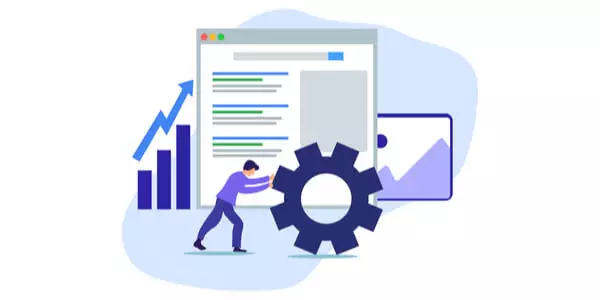Optimize Website Content for SEO
SEO is an essential tool for marketers.
When you optimize your website, including your blog articles, you’re improving the visibility of your company to people who use search engines (such as Google) to locate goods or services.
It’s critical for your site’s success to understand how to properly optimize it for SEO and conversions.
It will ensure that your website is working at maximum efficiency. You may get more visitors and convert leads if you have a good SEO strategy.
In this article, we’ll show you how to optimize your website content for SEO and conversions.
What Is Search Engine Optimization (SEO)?
Search Engine Optimization (SEO) is the practice of improving the ranking of a website on search engines. The higher the ranking, the more likely people are to find the site.
The goal of Google’s algorithm is to provide a great user experience for its users. As a result, Google wants to provide the best possible information to its searchers.
The focus of your SEO efforts should be on ensuring that search engines recognize your material as the most authoritative information available for a certain term.
SEO is the practice of making your website more visible to search engines. It involves improving your site’s ranking in the search engine results pages (SERPs).
There are two primary types of SEO: on-page SEO and off-page SEO.
On-page SEO
On-page SEO is the optimization of your website’s content and structure to make it more visible to search engines.
On-page SEO includes optimizing your website’s title, meta tags, header tags, images, and other elements.
Off-page SEO
Off-page SEO is the optimization of your website’s links and other external factors to make it more visible to search engines.
Off-page SEO includes link building, social media signals, and others.
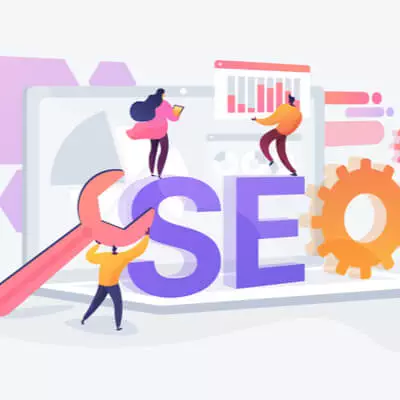
What Is Content Optimization?
Content optimization is the process of making your website’s content more visible to search engines.
Content marketing involves improving the quality and quantity of your site’s content, as well as making sure that your content is relevant to your target audience.
Why Is SEO Important?
The benefits of a good SEO strategy for websites include:
SEO targets quality traffic
SEO is cost-effective
PPC, on the other hand, is a paid marketing strategy. You have to pay for each click that you get.
SEO builds trust and credibility
This is because people trust that Google will only show the best websites in the top positions.
SEO drives more traffic
According to HubSpot, businesses that have a strong SEO strategy get 55% more organic traffic than businesses that don’t.
SEO improves your ROI
SEO gets more clicks than PPC
It’s impossible to know why this is, but it’s logical to assume that people trust Google’s algorithm.
They are aware of which advertising spots are being paid for, and they select to visit the pages that Google has deemed to be the better organically.
PPC may get more clicks in the short term, but SEO will get you more clicks in the long term.
SEO is a long-term strategy
PPC is a short-term strategy. You can see results from your PPC campaign almost immediately.
But, it takes time to build up the authority of your website and to improve your SEO.
This is why SEO is a long-term strategy, and PPC is a short-term strategy. SEO should be a part of your overall marketing strategy Your marketing strategy should include both SEO and PPC.
They are two different but complementary strategies that can help you achieve your marketing goals.
PPC can get you immediate results, while SEO can take longer to show results but will provide you with a steady stream of traffic that you can rely on in the long term.
SEO Provides 24/7 Promotion
This is because SEO is a long-term strategy, and it takes time for your efforts to show results.
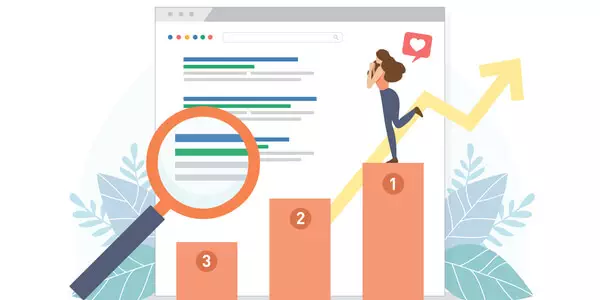
How to Optimize your Website for SEO
Here are some tips on how to optimize your website for SEO:
1. Identify the target audience for your blog
No matter what industry your blog targets, you need to identify your target audience.
This will help you tailor your content to their needs and wants. Understanding who your audience is and what you want them to do after reading your post will assist you in developing a blog strategy.
Identifying the target audience is step one in effective SEO practices.
2. Research what keywords your audience is searching
Once you’ve identified your target audience, research the keywords they are searching.
Your blog posts should be optimized for these keywords so that your target audience can easily find them.
Tools like Google AdWords Keyword Planner and Moz Keyword Explorer can help you find the right keywords for your blog.
It’s also a good idea to Google your chosen term to see how many results appear. Do you believe you can produce content that is superior to anything else on the market?
3. Find Semantically Related Keywords
After you have a list of relevant keywords, find semantically related keywords.
These are keywords that are related to your main keyword but are not exact synonyms.
For example, if your target keyword is “SEO,” some semantically related keywords could be “search engine optimization,” “Google algorithm,” and “keyword research.”
Using semantically related keywords in your blog post will help Google understand the topic of your article and index it accordingly.
4. Use Keywords Strategically in Your Blog Post
Once you’ve identified the target keywords for your blog post, you need to use them strategically.
Here are some tips:
– Use keywords in the title of your blog post. This will help your blog post rank higher in the search results.
– Use keywords in the first 100 words of your blog post. This will help search engines understand what your article is about and index it accordingly.
– Use keywords throughout your blog post. But don’t overdo it! Google will penalize you if you stuff your blog post with too many keywords.
– Use keywords in the meta description of your blog post. This is the short description that appears in the search results.
– Use keywords in the alt text of images in your blog post. This will help Google understand what the images are about and index them accordingly.
5. Optimize Your Website for Mobile
More and more people are using their mobile devices to search the internet.
This means that your website needs to be optimized for mobile devices.
If your website is not mobile-friendly, you’re likely to lose potential customers.
Here are some tips for optimizing your website for mobile:
– Use a responsive design. This means that your website will automatically adjust to the screen size of the device it’s being viewed on.
– Use large font sizes. This will make it easy for mobile users to read your content.
– Use short and concise sentences. Mobile users have shorter attention spans than desktop users.
– Use bulleted or numbered lists. This will make your content easier to scan.
– Use images. Mobile users are more likely to click on an image than text.
– Use call-to-action buttons. This will encourage mobile users to take action on your website.
Read our full guide here: Mobile Optimisation for Websites
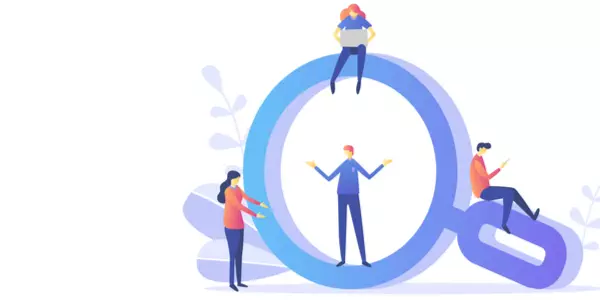
6. Produce long and value-rich content
Google prefers long-form content. This means that your blog posts should be at least 1,000 words.
But don’t just focus on the word count. Your blog post should also be valuable and informative.
It should provide the reader with something they can’t find anywhere else.
7. Be Aware of Cannibalization
Cannibalization is when two or more pages on your website are competing for the same keywords.
For example, if you have two blog posts that are both optimized for the keyword “SEO,” one of them is likely to rank higher in the search results than the other.
This can be a problem because it can prevent your website from ranking as high as it should in the search results.
To avoid cannibalization, make sure to use different keywords for each of your blog posts.
8. Add Visuals to Your Blog Post
People are visual creatures. We’re more likely to remember something if we see it.
This is why it’s important to add visuals to your blog post.
Visuals can include images, infographics, charts, and videos.
Not only will visuals make your blog post more visually appealing, but they will also make it more memorable.
9. Interlink Your Blog Posts
Interlinking is when you link to other blog posts on your website from within your blog post.
This is a good SEO practice because it helps Google understand the relationship between your blog posts and index them accordingly.
It also helps to keep people on your website longer, which can improve your website’s bounce rate.
10. Focus on the reader’s experience
Google’s number one priority is the reader’s experience.
This means that your blog post needs to be well-written with quality content and be informative.
It should also be easy to read and visually appealing.
The layout of your blog post is also important. Make sure to use short paragraphs and plenty of white space.
11. Optimize for off-page SEO
Off-page SEO is the process of optimizing your website to get backlinks.
Backlinks are links from other websites that link to your website.
The more backlinks you have, the higher your website will rank in the search results.
There are several ways to get backlinks, but the most effective way is to create great content that people will want to link to.
12. Monitor your SEO progress
The only way to know if your SEO efforts are paying off is to monitor your progress.
There are several ways to do this, but the most common way is to use Google Analytics.
Google Analytics is a free tool that allows you to track your website’s traffic and see where it’s coming from.
This is a valuable resource for understanding which SEO strategies are working and which ones need to be improved.
13. Get quality backlinks
A backlink is a link from another website that links to your website.
The more backlinks you have, the higher your website will rank in the search results.
There are several ways to get backlinks, but the most effective way is to create great content that people will want to link to.
14. Promote your content
Once you’ve created great content, it’s important to promote it.
There are several ways to do this, but the most common way is to use social media.
Social media is a great way to get your content in front of a large audience.
It’s also a great way to build relationships with influencers who can help promote your content.
15. Keep your website up-to-date
One of the most important SEO tips is to keep your website up-to-date.
This means regularly creating new content, updating old content, and improving your website’s design and user experience.
A well-maintained website will not only rank higher in the search results, but it will also be more likely to convert visitors into customers.

SEO Trends for Now and the Future
SEO is always changing. What works today may not work tomorrow.
That’s why it’s important to stay up-to-date on the latest SEO trends.
Here are a few of the most important SEO trends to keep an eye on in 2022
1. The rise of voice search
One of the biggest SEO trends right now is the rise of voice search.
With the popularity of smart speakers like Amazon Echo and Google Home, more and more people are using voice search to find information online.
To optimize for voice search, make sure to use natural language and long-tail keywords.
2. The rise of mobile search
Another big SEO trend is the rise of mobile search.
More and more people are using their smartphones to search for information online.
To optimize for mobile search, make sure your website is responsive and fast.
3. Understanding Searcher’s Intent
One of the most important SEO trends for 2022 is understanding searchers’ intent.
Searcher’s intent is what a person is looking for when they perform a search.
To optimize for the searcher’s intent, make sure your content is relevant and informative.
4. The importance of backlinks
Backlinks are still important for SEO.
However, the quality of a backlink is now more important than quantity.
To get high-quality backlinks, create great content that people will want to link to.
5. The importance of user experience
User experience is becoming more and more important for SEO.
This means creating a website that is easy to use and provides a good user experience.
To improve your website’s user experience, make sure your website is responsive and fast.
6. The importance of content
Content is still the king of SEO.
To rank well in the search results, make sure your content is relevant, informative, and engaging.
7. Artificial Intelligence
Artificial intelligence is starting to play a big role in SEO.
Google is using AI to better understand searchers’ intent and to provide more relevant results.
To stay ahead of the curve, make sure you are using AI to help you with your SEO.
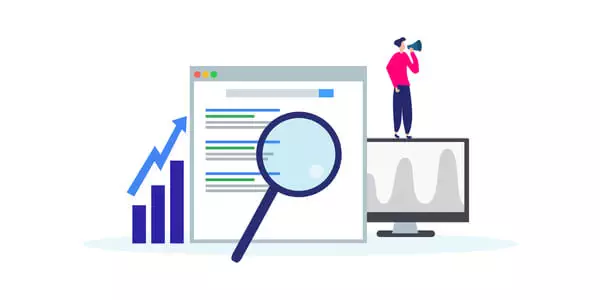
SEO Analytics Tools
There are several different SEO analytics tools that you can use to track your SEO progress. Tracking your SEO progress is important to ensure that your SEO efforts are paying off.
By using an SEO analytics tool, you can see which SEO strategies are working and which ones need to be improved. These tools will help you to understand your website’s traffic, performance, and search engine rankings.
Some of the most popular SEO analytics tools include Google Analytics, Moz, and Ahrefs.
1. Google Analytics
Google Analytics is a free tool that you can use to track your website’s traffic, detailed web page data, and performance.
2. Moz
Moz is a paid SEO tool that provides several features to help you track your SEO progress. Moz is an SEO and data management tool that aids businesses in increasing traffic, ranking, and visibility of their websites in search results.
3. Ahrefs
Ahrefs is mainly used to analyze a website’s link profile, keyword rankings, and web page SEO health. It is one of the best tools to improve the SEO strategy for your website.
4. SEMrush
SEMrush is a comprehensive tool package that may assist companies in gaining more exposure through search engines and discovering marketing insights.
5. HubSpot Website Grader
The Marketing Influence of a Website Grader assesses the marketing impact of a website and gives an inbound marketing score (on a scale of zero to 100) that incorporates web traffic, SEO, the blogosphere, social media, and other inbound marketing criteria.
SEO is always changing, so it’s important to stay up-to-date on the latest trends. By understanding the latest SEO trends and using an SEO analytics tool, you can stay ahead of the competition and make sure your website is ranking well in the search results.
Final Thoughts
SEO is an important part of any online marketing strategy. If you want your website to rank well in the search results, you need to make sure you are using the latest SEO trends.
SEO can improve your website’s traffic, but it can also improve your website’s conversions. This is because SEO helps you to create a website that is designed for conversion.
By following the tips in this article, you can create a website that is optimized for both search engines and users. This will help you to get more traffic and convert more visitors into customers.
If you’re not already using SEO to improve your website, now is the time to start.
Web Design Cost – 11 Things you need to know
Having a website for your small business is one of the most important tools for building trust and attracting customers. Website costs can vary widely depending on factors like design complexity, features, and the experience of your designer. In this article, we’ll...
E-Commerce Website Trends and Innovations for Small Business Owners
Ever wondered what separates thriving online ventures from the rest in this dynamic digital landscape? As the e-commerce world continues to evolve at lightning speed, small business owners might find themselves asking, "What's next for e-commerce sites?" Well, the...
The Importance of Responsive Web Design: Creating a Seamless User Experience
The primary goal of responsive web design is to deliver a seamless and visually captivating user experience on a wide array of platforms, including desktops, tablets, and smartphones. In this guide, we will delve deeper into the world of responsive design. We'll...

